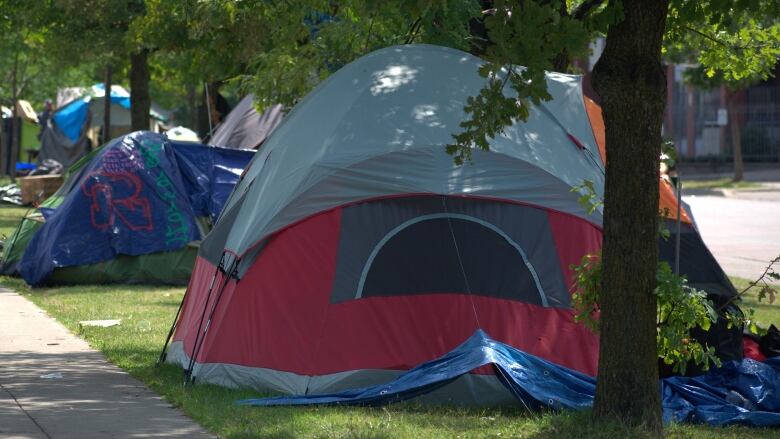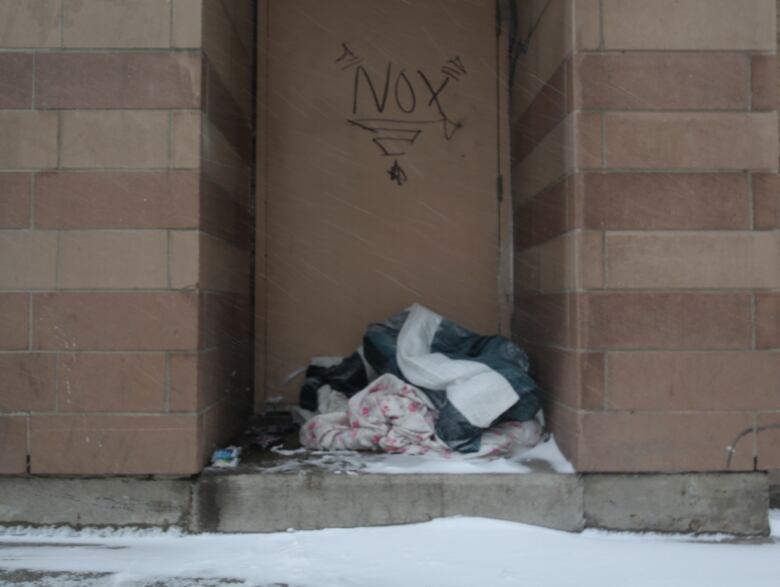Call for Hamilton to increase shelter capacity as COVID-19 cases, outbreaks rise
'I'm worried ... good, hard work may become squandered if we don't double down'

Agencies, outreach workers and city staff have worked hard for months to keep COVID-19 out of Hamilton's sheltersbut,as cases continue to rise across the province, outbreaks are beginning to appear.
Two staff members at theGood Shepherd Men's Centre and one patron of Good Shepherd Women's Services have tested positive, raising concerns more must be done to protectone of the city's most-vulnerable populations.
Dr. Tim O'Sheasays he's had a "grumbling concern" over the situation for weeks as he's watched case numbers climb in the city, but that feeling has become more acute in the last couple of days.
Now he's afraid all of the effortpoured into preventing outbreaks in Hamilton's shelter system could be washed away unless action is taken.
"We've sort of built up a wall around it, but it feels like there's breaches in that wall that are starting to trickle into the shelters," he said."I'm worried that all of that good, hard work may become squandered if we don't double down and think about new measures, invest in new measures to make sure this population is protected."
O'Shea is part of a team that's been carrying out rapid testing among the city's homeless population.
Members of the Shelter Health Network have been going to shelters to do same-day testing for anyone that's symptomatic, while O'Shea and others have swabbed about 8,0000 asymptomatic patrons and staff as part of a surveillance testing study aimed at preventing outbreaks before they happen.
Those strategies, along with support from the city and measures that were quickly put in place shelter providers are "unique across the country" and have largely kept the virus at bay, said the doctor.
But, he added, it's naive to think the wide-spread outbreaks that have hit shelters in other Canadian cities couldn't happen here despitebest efforts.
Call for expanded shelter capacity
O'Shea is calling on the city to make plans for how to handle a surge in people needing a place to isolate, especially as hospital beds fill up and the weather gets coldersoemergency shelter beds will be at a premium.
"I think we need to think about expanding capacity in the shelter system, making sure there's surge beds both for people who need to isolate as well as people that just need a place to sleep," he said.

One of the most challenging aspects of managing the virus among homeless people is how difficult it is to carry out contact tracing, especially among people who are sleeping rough and scattered around, according toO'Shea.
"We need to think again about the policies that have been put in place about moving people along when encampments do pop up, at least until we have a sense of whether this is going to be a major problem in our shelters," he said.
City still seeking solutions
Michelle Baird, director of epidemiology, wellness and communicable disease control for Hamilton Public Health, also said seeing cases appear in shelters is concerning as prolonged close contact can cause the virus to spread.
"We don't want to see transmission in these settings because we would have situations perhaps where numbers would increase rapidly," she said
The city has gone "above and beyond" to protect its shelters, said Baird, but that doesn't totally mitigate the risk.
While she acknowledged it's easier to complete contact tracing if people aren't moving around, Baird said the COVID-19 cases so far have been found within the shelter system.

Agencies and public health's street outreach teamhave "routine interactions" with people sleeping rough and the city would rely on them to find someone if contact tracing was necessary, she added.
There are also dedicated beds for isolation and a working group is looking at capacity issues, she said in response to O'Shea's call for a plan.
"All of that is being considered," said Baird. "I agree that those are all important discussions to be had. I'm not so sure we have solutions to all of them just yet, but definitely those are conversations that are underway."
For his part, O'Shea said doing more to stop the spread of COVID-19 among the homeless in Hamilton will help ensure hospitalsand the rest of the local health system aren't overrun.
While good work has been done, he urged the city to do more.
"I think we need to build on that good work and recognize that the situation is different than it was even in March and April in terms of the absolute numbers and risk to the population."












_(720p).jpg)


 OFFICIAL HD MUSIC VIDEO.jpg)
.jpg)



























































































